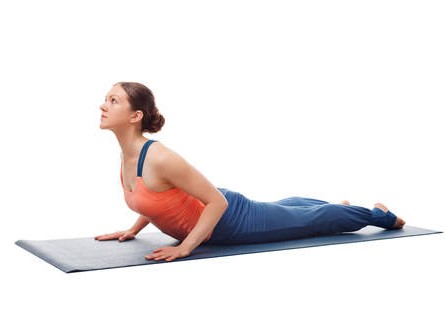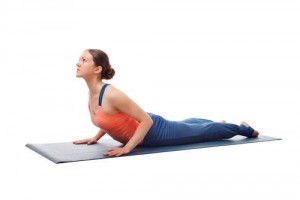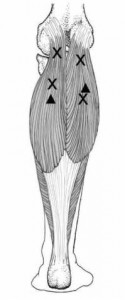
October 30, 2023
Nurturing Harmony: Embracing Chinese Medicine in working with Anxiety

Dr Giles Sadler has often treated plantar fasciitis and writes this article to educate you on how it develops and what you can do to reduce the pain.
Heel pain is often caused by plantar fasciitis, a reactive condition of the tendons in the sole of the foot.
Characteristics of plantar fasciitis are:
Acupuncture is a good treatment option for plantar fasciitis, and the treatment is assisted by herbal foot soaks and physical therapy.
Plantar fasciitis often results from the tendons of the sole of the foot being overloaded by poor posture and muscle recruitment. Sitting at a desk all day can shorten the muscles that pull the legs towards the hips and spine, and this can prevent the butt muscles from efficiently moving the legs to drive us forwards as we walk or run, or upwards as we climb stairs or get up from sitting. As a result, the calves and hamstrings do more work than they should, and this overuse can concentrate the tension in the tendons of the sole of the foot.
Notice that I said that this is a reactive condition, rather than an inflammatory one. Chronic tendon pathology is described as tendinopathy and does not involve inflammation but changes to the tissue as it tries to repair itself and manage the excessive loads placed on it whilst injured.1 As part of the recognition that the condition is not an inflammatory one, the preferred name for it is plantar fasciosis. So, it doesn’t make much sense to use anti-inflammatory medications such as ibuprofen becaue there is no inflammation. Sometimes, the anti-inflammatory drugs can provide short-term pain relief, but there is no evidence that they are of any long-term benefit.2
Acupuncture can relieve the pain of plantar fasciitis and promote recovery, and reduce the tension in the leg muscles that are creating the problem. Not only have there been clinical trials that show this,3 4 but many health practitioners who aren’t acupuncturists use our Chinese Medicine techniques because they work. At Health in Flow Chinese Medicine we also use herbs to soak the affected foot that relieves pain and helps heal the tendons. This combination of acupuncture and herbal therapy had positive outcomes in a study by a Chinese hospital.5
Targeted resistance training that helps restore the proper structure of the tendons to relieve pain and speed recovery is used.6 It is recommend to do isometric training in which the load is maintained for as long as 30 seconds.
Exercises
Moving onto muscle chain exercise involving the calf depends on the severity of pain in the sole of the foot. Isometric strengthening as in the video below is usually ok but individuals should be assessed depending on their condition. Hold the position at the top for 30 seconds, then do the other side. Again 3-5 repetitions a side should be done. You may experience pain doing this exercise, but the pain shouldn’t be worse afterwards and there may even be some relief. If it is worse the next day, reduce the holding time and/or repetitions.
Stretching the muscles that may be contributing to the poor posture and movement patterns that are responsible for the plantar fasciitis is necessary to take the load off the affected tendons in the foot. A great muscle group to stretch are the hip flexors.
A common stretch is this one here but be careful of letting your hip roll forwards.

An easier stretch to do for the hip flexors is the cobra pose.
Hip flexors can be difficult to isolate and stretch, as they run deep and connect to both the hip and spine. The cobra pose is a good way to stretch the hip flexors.
Do
Don’t


Sometimes it seems that the more attractive the demonstrator is, and the more scenic the location, the less likely the posture is to stretch the hip flexors!
These include:

There are other manual release techniques but these are best taught by other professionals.
Please note that the above exercises and techniques are to be used at your discretion and it is recommended that you see a professional for diagnosis and treatment.
1 Rees JD, Maffulli N, Cook J. “Management of Tendinopathy” Am J Sports Med 37(9):1855-67 · March 2009
2 Childress MA, Beutler A. “Management of Chronic Tendon Injuries” Am Fam Physician. 2013 Apr 1;87(7):486-490
3 Shi Ping Zhang, Tsui-Pik Yip, and Qiu-Shi Li “Acupuncture Treatment for Plantar Fasciitis: A Randomized Controlled Trial with Six Months Follow-Up” Evidence-Based Complementary and Alternative MedicineVolume 2011, Article ID 154108 retrieved 7/718
4 Wipoo Kumnerdee, Nitsara Pattapong “Efficacy of Electro-Acupuncturein Chronic Plantar Fasciitis:A Randomized Controlled Trial” The American Journal of Chinese Medicine, Vol. 40, No. 6, 1167–1176 2014 Retrieved 7/7/18
5 Healthcare Medicine Institute “Acupuncture Plantar Fasciitis Relief Confirmed” November 27 2017, retrieved
7/7/18
6 Rathleff MS, Molgaard CM, Fredberg U, Kaaland S, Andersen KB, Jensen TT, Aaskov S, Oleson JL “High-load
strength training improves outcome in patients with plantar fasciitis: A randomized controlled trial with 12-month follow-up” Scand J Med Sci 2014